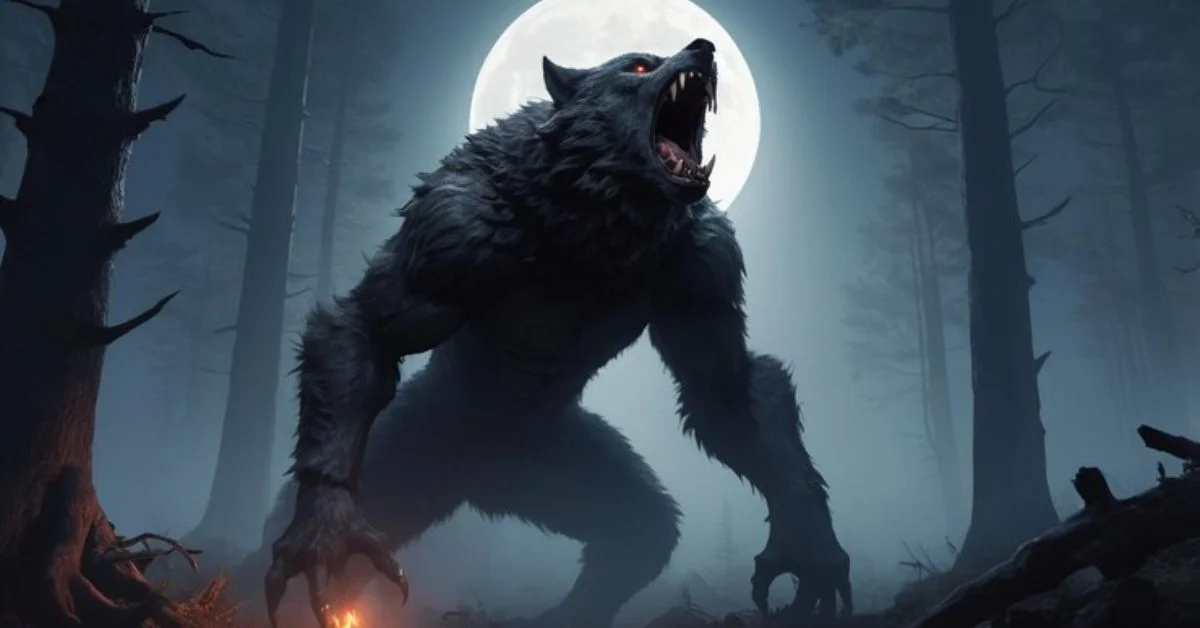A werewolf is a mythical creature believed to transform from a human into a wolf, typically under the influence of a full moon. The term comes from Old English wer (man) and wulf (wolf), and the concept has appeared in folklore worldwide for centuries. Often depicted as cursed individuals, werewolves symbolize transformation, suppressed instincts, and the duality of man. In this article, we delve into the historical roots of the werewolf myth, cultural interpretations across different societies, how the creature evolved in literature and film, and why it continues to fascinate and frighten us in modern culture.
The Ancient Origins of the Werewolf Myth
Before cinema and campfire stories shaped our current image of the werewolf, civilizations across the world had their own versions of lycanthropic lore—tales of humans transforming into animals, often wolves.
Ancient Greece: The Story of Lycaon
One of the earliest references to werewolves comes from Greek mythology, particularly the tale of King Lycaon. According to legend, Lycaon tried to trick Zeus by serving him a meal of human flesh. In punishment, Zeus transformed him into a wolf. This myth gave rise to the term “lycanthropy”, now used to describe both the transformation and the psychological delusion of becoming a wolf.
Norse Mythology: The Saga of the Volsungs
In Norse folklore, warriors known as berserkers were said to don animal skins—often bear or wolf pelts—that granted them ferocious power in battle. The Saga of the Volsungs tells of a father and son who wear enchanted wolf skins and are consumed by their beastly forms. These stories suggest an early link between physical transformation and uncontrollable rage.
Indigenous and Eastern Traditions
Though wolves are not native to every region, similar shapeshifting legends appear globally. In parts of India, for example, there are legends of people who become tigers instead of wolves. In North American indigenous cultures, skinwalkers—people who could change into animals—appear as cautionary figures with immense spiritual power.
The Evolution of the Werewolf in Medieval and Early Modern Europe
By the Middle Ages, werewolf legends had grown darker, often entwined with witchcraft, heresy, and sin. People genuinely feared werewolves and believed they lived among them.
Witch Trials and Werewolf Accusations
During the European witch hunts between the 15th and 17th centuries, accusations of lycanthropy were not uncommon. Individuals were tortured and executed under suspicion of turning into wolves and killing livestock or children. In 1589, Peter Stumpp, a German farmer, was famously executed after confessing—under torture—to being a werewolf and committing horrific murders.
The Beast of Gévaudan
In the mid-1700s, the Beast of Gévaudan, a creature described as part-wolf, terrorized a French countryside. Over 100 deaths were attributed to the beast. The real identity of the killer remains uncertain, but hysteria helped cement the idea of the werewolf as a real, deadly threat.
Lycanthropy and Mental Health: A Psychological Perspective
As science advanced, supernatural beliefs came under scrutiny. The 19th and 20th centuries brought forth attempts to explain lycanthropy through psychology.
Clinical Lycanthropy
This is a rare psychiatric syndrome in which a person believes they have transformed into an animal. Patients may behave like wolves—growling, crawling, or hunting imaginary prey. Often associated with schizophrenia, bipolar disorder, or dissociative identity disorder, clinical lycanthropy reveals how deeply ingrained the werewolf archetype is in the human psyche.
This condition is not fantasy—it has been documented in medical journals, offering a sobering glimpse into how folklore can shape mental health perceptions.
Werewolves in Literature: From Folktale to Fiction
The werewolf as a literary figure emerged prominently in 19th-century Gothic fiction, where themes of duality, repressed desires, and monstrosity thrived.
Key Works:
- “The Were-Wolf” (1896) by Clemence Housman: One of the earliest feminist interpretations, portraying a female werewolf who seduces and kills.
- “The Strange Case of Dr. Jekyll and Mr. Hyde” (1886) by Robert Louis Stevenson: While not strictly a werewolf tale, it reflects similar themes of dual identity and uncontrollable transformation.
- “The Wolf Leader” (1857) by Alexandre Dumas: Combines folklore with political satire, setting the stage for the werewolf as a metaphor for power and vengeance.
Hollywood and the Modern Image of the Werewolf
It wasn’t until the advent of Hollywood cinema that the werewolf became the snarling, moon-obsessed creature we recognize today.
The Wolf Man (1941)
Universal Pictures’ The Wolf Man starring Lon Chaney Jr. introduced many tropes we now associate with werewolves:
- The full moon triggers transformation
- Silver bullets kill werewolves
- The werewolf is a tragic figure, cursed and doomed
1980s Horror Boom
Films like An American Werewolf in London (1981) and The Howling (1981) pushed special effects and body horror to new limits. Transformation scenes became grotesque metaphors for puberty, addiction, and identity crises.
Werewolves in Teen Drama and Fantasy
More recently, werewolves have softened. In Twilight, they become romantic heroes. In Teen Wolf, they’re high school jocks with superpowers. This shift reflects a cultural move away from fear and toward fascination—even identification—with the beast.
Symbolism: Why Werewolves Still Resonate
The enduring power of the werewolf myth comes from its ability to speak to universal human fears and instincts.
Themes:
- Duality: Human vs. animal, civility vs. savagery
- Loss of control: Giving in to rage, desire, or trauma
- Transformation: Puberty, addiction, psychological breakdown
- Outsider status: Werewolves are often loners, feared and misunderstood
These metaphors remain potent in an era where identity and self-control are under constant negotiation.
Werewolves in Pop Culture Today
The werewolf hasn’t disappeared; it’s evolved. The creature now appears in:
- Urban fantasy novels (e.g., The Mercy Thompson series)
- Video games (The Witcher, Skyrim)
- Streaming TV (The Originals, Hemlock Grove)
- Music and fashion, where “wolf” imagery represents rebellion and strength
Werewolves have become cultural shorthand for feral power, mystery, and antihero energy—appealing across gender, age, and genre.
Werewolves vs. Other Shape-Shifters
It’s important to distinguish werewolves from other shapeshifting entities:
- Vampires: Often portrayed as controlled and seductive; werewolves are impulsive and chaotic
- Skinwalkers (Navajo): Spiritual figures capable of assuming animal form, but with a different mythos
- Animagi (Harry Potter): Voluntary transformation with no curse
Each has distinct cultural and psychological roles, but the werewolf remains uniquely positioned as the most primal and tragic.
Real-World Impacts of the Werewolf Myth
While rooted in fiction, belief in werewolves has real-world consequences:
- Historic violence: Witch trials and rural killings often targeted accused “werewolves”
- Pop culture influence: Werewolf imagery shapes fashion, music, and gaming
- Mental health: Clinical lycanthropy shows the story’s deep psychological grip
As technology advances, we may yet find new “digital werewolves”—virtual identities, avatars, and behaviors that echo the transformation myth in cyberspace.
Conclusion: The Enduring Allure of the Werewolf
The werewolf endures because it reflects our deepest internal contradictions. It is the embodiment of what we repress: rage, instinct, desire, otherness. It’s the voice howling in the dark corners of the mind, reminding us that no matter how modern or civilized we become, there’s something ancient and wild inside us.
From myth to medicine, film to folklore, the werewolf remains a creature not just of the night—but of the human condition. Its transformation mirrors our own—messy, emotional, and occasionally uncontrollable.
In a world obsessed with identity, power, and authenticity, the werewolf continues to prowl—both on screen and in psyche.
Frequently Asked Questions (FAQs)
1. What causes someone to become a werewolf in myths?
Traditionally, werewolves are created by being cursed, bitten, or performing certain rituals. In modern stories, a bite or inherited trait usually triggers transformation.
2. Are werewolves real?
There’s no scientific evidence for real werewolves. However, belief in them has influenced history, literature, and mental health diagnoses like clinical lycanthropy.
3. Can werewolves control their transformation?
In older myths, no. The transformation was a curse. In modern fiction, some werewolves learn to control it, especially in fantasy or sci-fi settings.
4. What kills a werewolf?
Folklore varies, but silver is the most common weakness. Other methods include fire, decapitation, or magical rituals.
5. What’s the difference between a werewolf and a shapeshifter?
All werewolves are shapeshifters, but not all shapeshifters are werewolves. Werewolves specifically turn into wolves or wolf-like creatures, usually involuntarily and under a curse.
For more information, click here.









